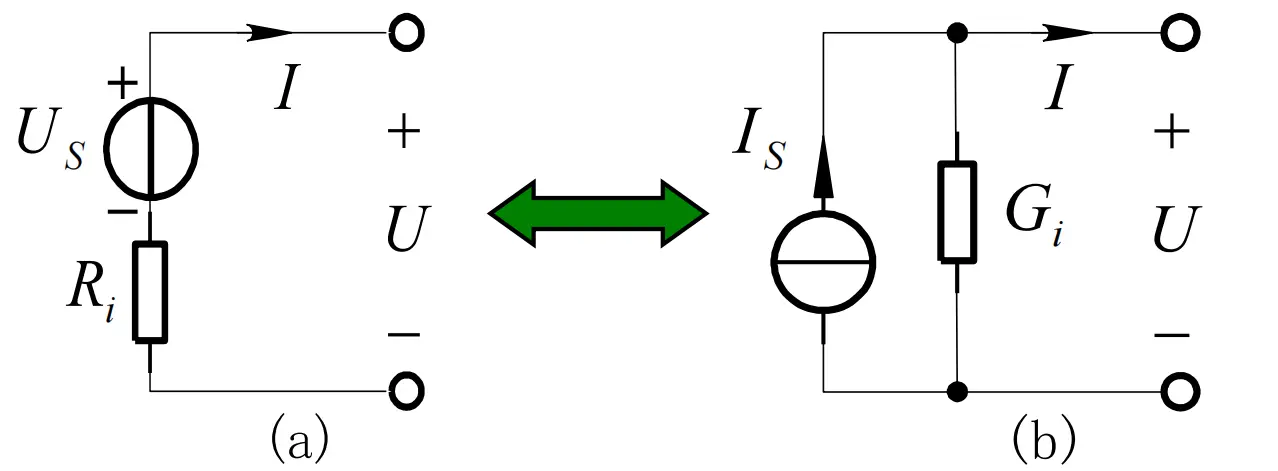Voltage source in series with resistance Current source in parallel with resistance
 Since they are equivalent circuits, their terminal voltage and main circuit current are equal.
Since they are equivalent circuits, their terminal voltage and main circuit current are equal.
The voltage and current relations they satisfy are:
For them to be equivalent, it must satisfy Obviously, the resistances in both equivalent circuits are equal. The voltage source and current source, along with the resistance, follow Ohm's law, which makes it easy to remember.
Voltage source in parallel with resistance and Current source in series with resistance
Since the parallel resistance doesn't divide voltage, and the series resistance doesn't divide current, the resistances can be directly removed.
Voltage source in parallel with current source and Current source in series with voltage source
In a parallel circuit, only the voltage source is effective, and in a series circuit, only the current source is effective.
Voltage source in series and Current source in parallel
Simply add them together.
Voltage source in parallel and Current source in series
To avoid contradictions, these voltage sources (or current sources) must be the same; the effect is the same as a single source.